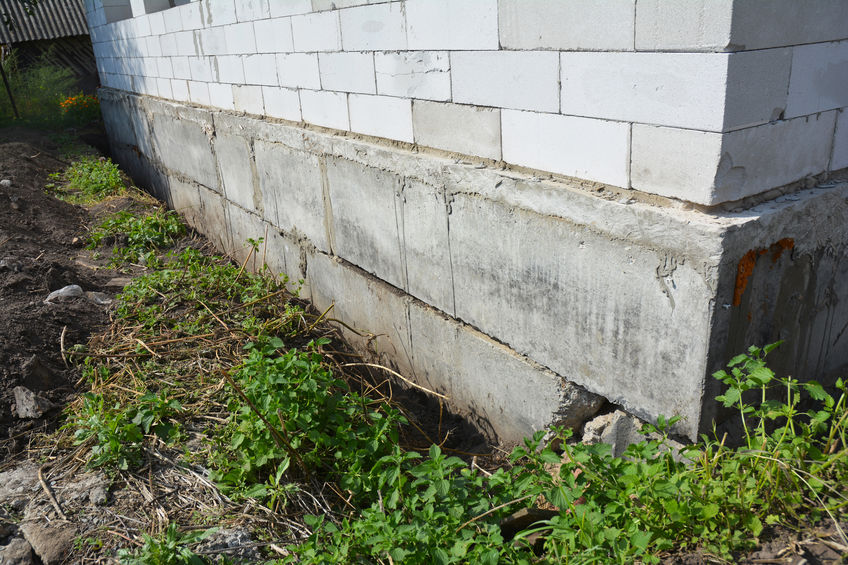
- Slab-On-Grade
A slab-on-grade foundation is commonly used in the modern home building because of its low cost and quick installation. The slab is a monolithic concrete pad that can range anywhere between four to eight inches thick. It is usually reinforced with drainage pipes and steel rods to create a strong foundation. The right contractors can lay a concrete slab-on-grade foundation in a short period since the drying process is shorter compared to other types.
This type of foundation is often used in climates that experience ground freezing and thawing to prevent the concrete from cracking, as it may lead to shifting of the foundation. One downside of the slab-on-grade foundation is that drainage pipes and water supply are encased in the concrete. This makes it difficult to access the pipes in the event of water problems or damage. Unlike other models, slab-on-grade does not offer any living or storage spaces since the entire house rests on the surface.
- Full Basement Foundation
Full basement foundation is one of the deepest types of foundation you can choose for your house. Generally, it is installed at least six feet high and features a full basement that matches some or all of the floor spaces on the above levels. Many modern homes are designed with taller basements that can be converted into a living space. They can also be used for storage purposes or to create secret rooms that can only be accessed by the homeowner. You also have the option to heat or cool a full basement if it will be used as a living space. Old homes were designed with short full basements featuring stonewalls. This is quite different from the basement foundations in modern homes, made with mortared concrete or poured concrete block.
- Crawlspace Foundations
This type of foundation is made up of short foundation walls that rest on solid footings. Since the walls are very short, they create a space where you have to crawl through. Crawlspace foundations are more affordable compared to full basements, as they require less wall material, labor, and excavation. They are typically made with mortared concrete or poured concrete and can stand at least 4 feet tall. This provides enough room for storage or other equipment. They are considered the most durable foundation in areas that have a high groundwater level. The crawlspace provides good airflow underneath your home during summer and provides better protection against loose soil and water.
- Pier Foundation
Pier foundations are created using small square-like or circular pads of concrete in points that are strategically located along the outer perimeter of the home. Steel rods or treated wood posts are used to insert and secure these pads into the ground. The rods or posts are then connected to your home to provide support. This type of foundation is ideal in areas where it is difficult to lay a traditional foundation. Although it may not be considered as the first choice, it is one of the sturdiest and durable types of foundation that provides excellent support to a home. Although it works great for detached structures or small sheds, it is more expensive when you want to construct a home off the ground.
- Raft or Mat Foundation
Mat or raft foundations are spread across the entire area of the building to provide adequate support for heavy structural loads from walls and columns. This type of foundation may be designed as a single mat of all the load-bearing elements of the structure to prevent differential settlement of the footings. It works best for expansive soils with a bearing capacity that is less suitable for wall and spread footings. However, this type of foundation is not used if the groundwater level is above the soil’s bearing surface.
Any type of foundation can hold up as long as it is built correctly according to the geographical climate, location, and soil-type. It is very important to understand the suitability of each foundation type before starting a construction project, as it determines the longevity and durability of the building.
